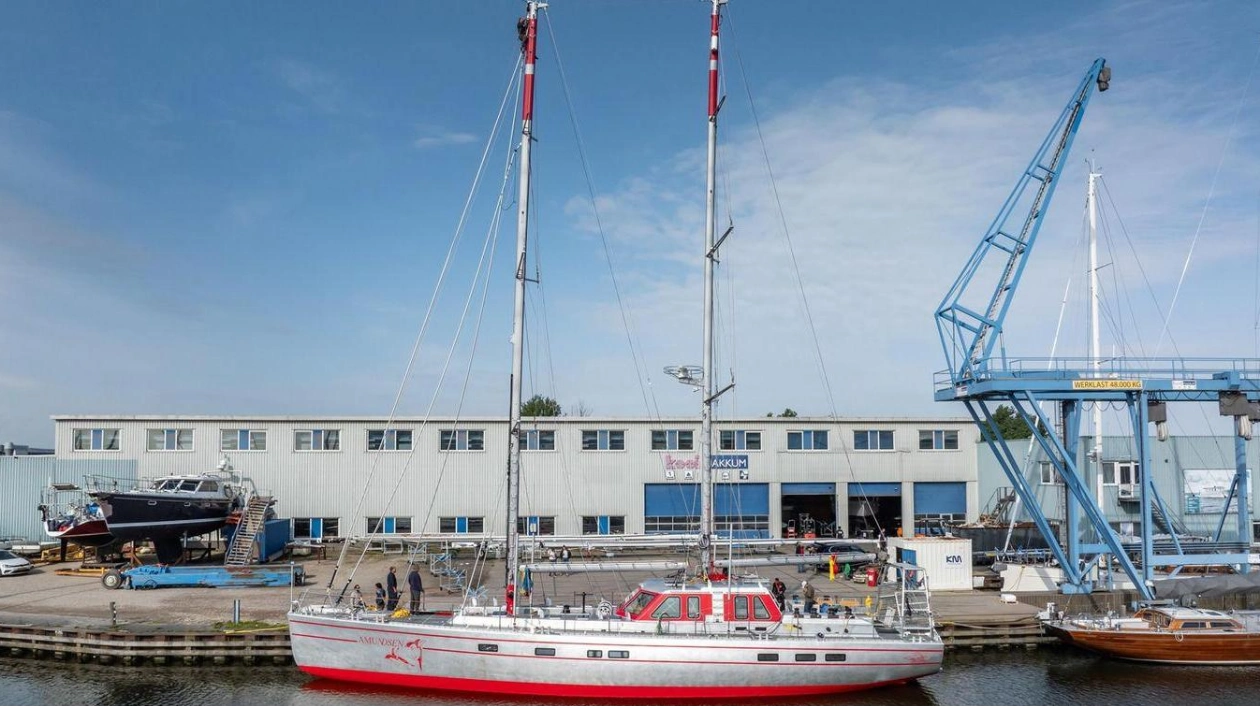Dutch shipyard KM Yachtbuilders has recently handed over the second 23.5-metre Pelagic 77 yacht from its Makkum, Netherlands, facilities. Named Amundsen in tribute to the renowned polar explorer Roald Amundsen, this sailing yacht is scheduled to arrive at the Falkland Islands by 2025.
Construction of the second unit commenced in March 2022 and was commissioned by the same owner who ordered the first hull. The naval architecture was designed by Tony Castro. Amundsen closely resembles her sistership, Vinson of Antarctica, sharing the same aluminium hull and superstructure. However, Amundsen distinguishes herself with an updated, eco-friendly propulsion system.
Upon completion, the vessel will be tailored for Arctic cruising and research, contrasting with her sistership's operations. Additional improvements include enhanced headroom in the pilothouse, the elimination of the centreboard from the fixed keel, expanded engine room capacity, and the installation of two Volvo engines, replacing the Yanmar engines used in Vinson of Antarctica.
Amundsen features a 6.2-metre beam and a distinctive red boot stripe near the waterline. Her two carbon masts are designed to maintain a balanced sailing surface and are equipped with manually operable sail systems, including winches and jib rollers. Onboard, Amundsen offers a dedicated wheelhouse, a spacious sitting room, and a fully equipped galley, comfortably accommodating up to eight guests for extended voyages.
Peter Wilson, founder of MCM Newport, highlighted the enhancements. He stated: “In her brief existence, Vinson has demonstrated her capabilities, traversing thousands of miles in some of the world's harshest conditions in Antarctica and the Southern Ocean. For Amundsen, we’ve enhanced the autopilot and steering systems and refined various aspects of the rig, rigging, deck, and interior to improve both performance and reliability.”
Skip Novak, polar sailor and commercial director of Pelagic Expeditions, noted that the first model has supported four educational projects in Chile and Spain and they aim to replicate this success. The sistership is intended for use by scientists, biologists, film and video crews, and for other ecological purposes.
Skip explained the rationale behind the second Pelagic 77: “The decision to build a sistership to Vinson of Antarctica was driven by the success of the original design. These vessels support educational projects for schools in Chile and Spain, and Vinson now operates with South America as her base, including a north-south Atlantic crossing and expeditions in the southern hemisphere.”






